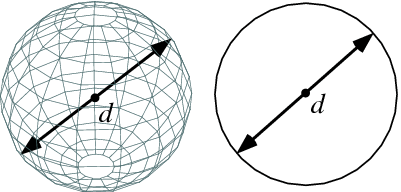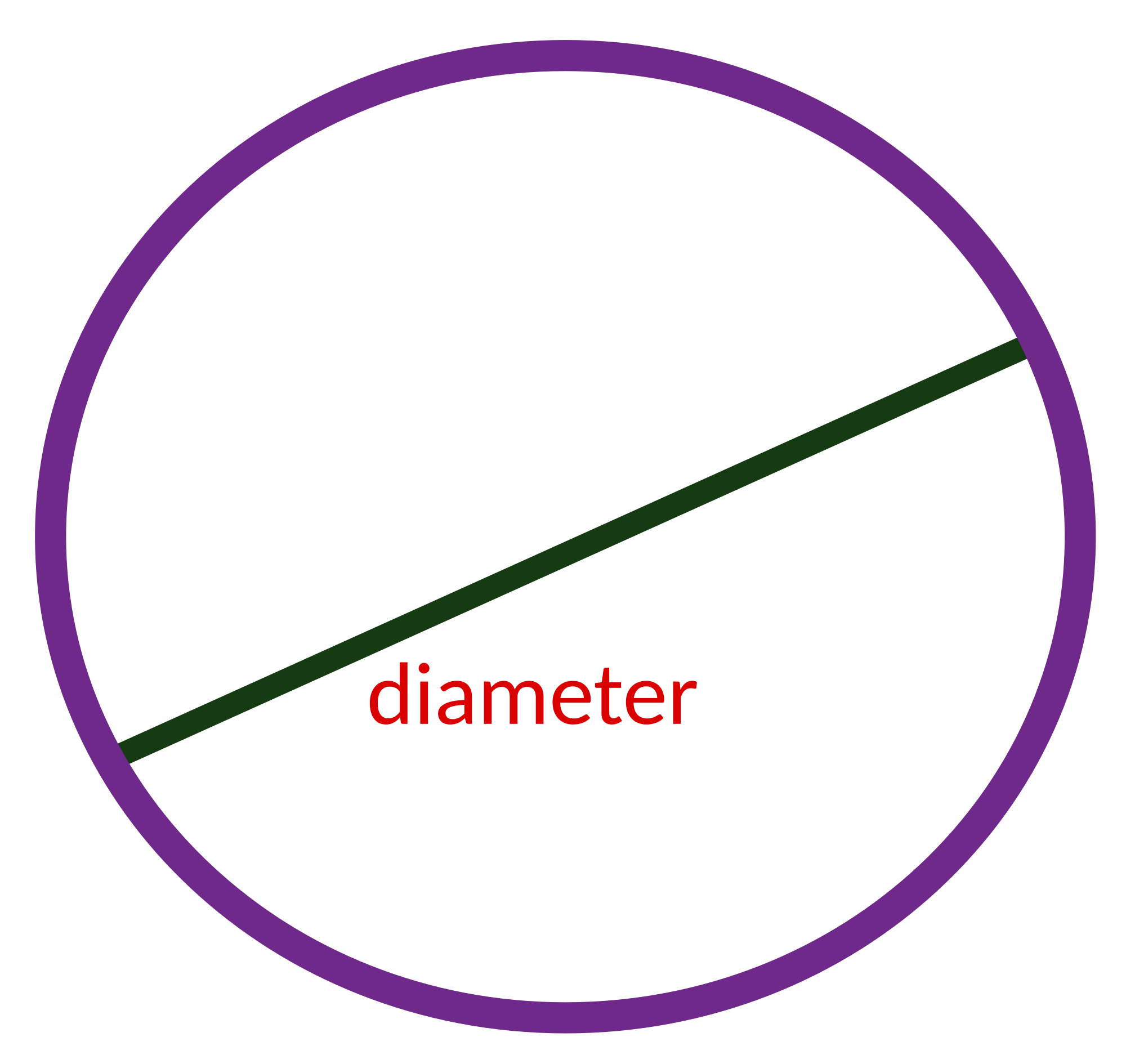Diameter
The diameter (Greek διάμετρος, diâmetros ) of a circle or sphere is the maximum distance between two points of the circle or the sphere surface points. When this circuit is the longest possible string. The diameter of a rotation body is the longest chord perpendicular to the axis of rotation of the body.
The diameter of a circle or a sphere also corresponds to the distance between the intersection points with a straight line passing through the center. In higher dimensional cases, the diameter is the length of the path that is cut from a straight line through the center of the sphere ( the circle, the sphere, the sphere ... ). Also this track itself is sometimes referred to as a diameter of the sphere.
Half of the diameter is called the radius. The ratio of circumference of a circle to the diameter of the circle number When a circle is therefore considered
Diameter in the art
Technical formulas are preferably constructed so that the diameter and not the radius is included as a variable, as determine the diameter with the standard workshop measuring equipment (eg, calipers ) directly and then can be applied in the formula.
In the metal processing can be measured, for example, the diameter of a hole or a pin with the appropriate measuring devices. The diameter corresponds to the largest dimension that is measured perpendicular to the bore axis or pin.
In technical drawings, the diameter ⌀ characters (U 2300 ) - not to be confused with the letter ø and Ø and the sign of the empty set ∅ (U 2205 ) - preceded by the numerical values of circular shapes. Previously, this character is only used when the circle shape was seen immediately, i.e. for example in the cross-sectional view of holes or through-holes. In mathematics, this symbol also denotes the average (mean ).
Ball diameter are also given in suns, planets and moons, each representing a sphere.
Inner and outer diameter
In the case of a cylindrical or conical hollow body, also with cylindrical or conical, usually central opening, bore or recess, a distinction between the inner and outer diameters. As an example, tubes, pipes, hollow shafts, ball bearings and the like can be mentioned. The manufacturing process encompasses almost all known in the manufacturing technique to give the most accurate results depend largely on the material and the dimensions of the workpiece.
For measuring and checking the diameter partially specialized equipment and measurement methods have been developed. For the inner diameter there is, among other things Innenmesschrauben or quick button for testing particularly the gauges are worth mentioning. Outer diameter can be customized with almost all the known length measuring means measure, but too there are separate devices. The most famous are the caliper, with the inner diameter are also recorded, and the micrometer. To check are in addition to other methods in that it gauges. Also both diameters, unless they are too small, can be detected at modern coordinate measuring machines.
A separate notation for the inner or outer diameter could up to now not prevail, but that is mostly used for small d the inner diameter and the large D is the outside diameter. For pipes and hoses to specify the dimensions of the control by the outside diameter and the wall thickness is common and in some areas as well are standardized.
Diameter in metric spaces
A generalization is the diameter of a set in a metric space metric in mathematics. It is defined as the supremum of all distances of any two points in space,
For circles and spheres in Euclidean spaces, this definition with the geometrical above term is consistent.
Other uses of the term
- Diameter (graph theory ) - the maximum distance between two nodes in a graph
- Equivalent diameter - the diameter of an equivalent to a given body ball Aerodynamic diameter - equivalent diameter with respect to the aerodynamic









